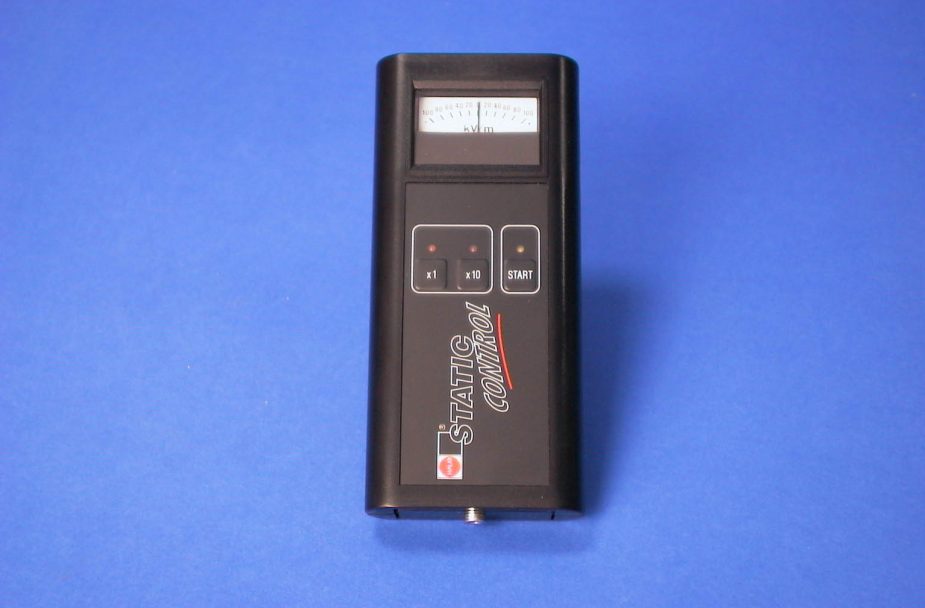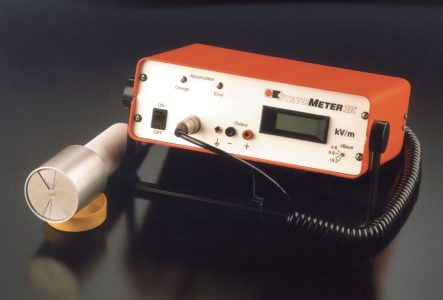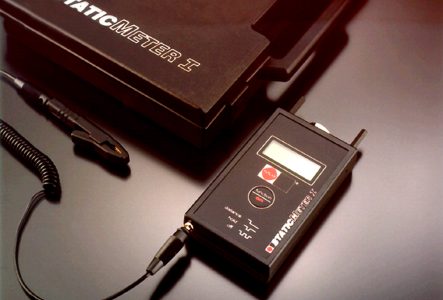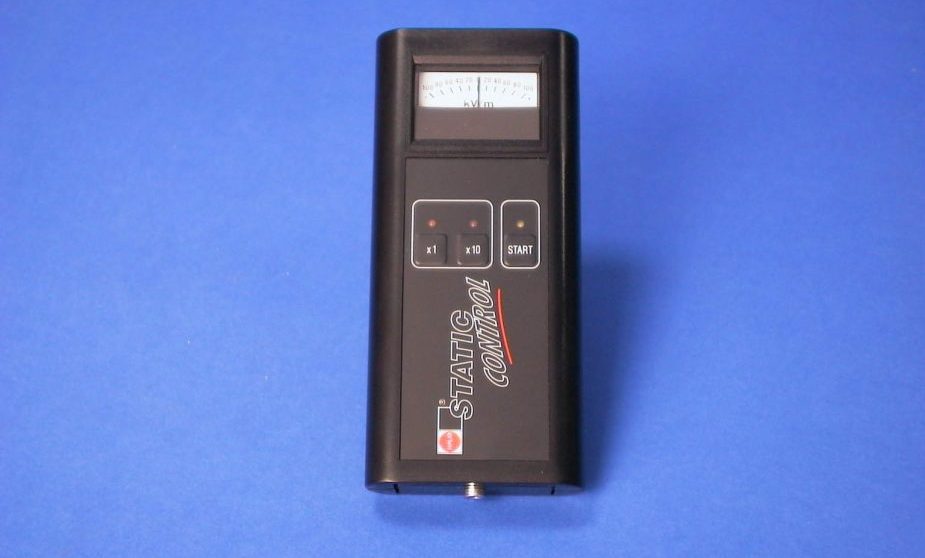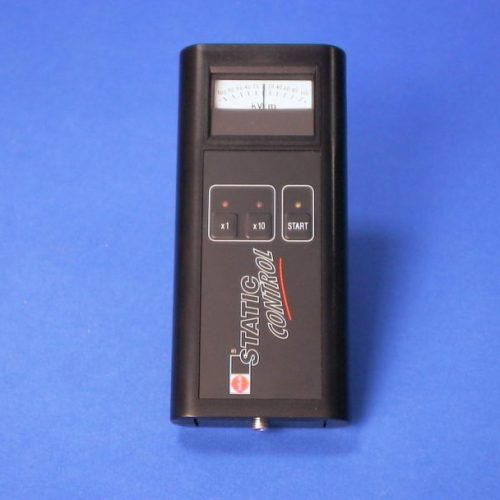Strumenti di misura
Generalità
A corredo dei nostri sistemi elettrostatici abbiamo Strumenti di Misura di vario tipo, soprattutto per monitorare il funzionamento delle barre ionizzanti e degli alimentatori e per misurare l’intensità del campo elettrostatico prima e dopo il trattamento.
Strumenti di misura disponibili
La HAUG offre vari tipi di strumentazione per misurare le cariche elettrostatiche e verificare il buon funzionamento degli alimentatori e delle barre di scarica.
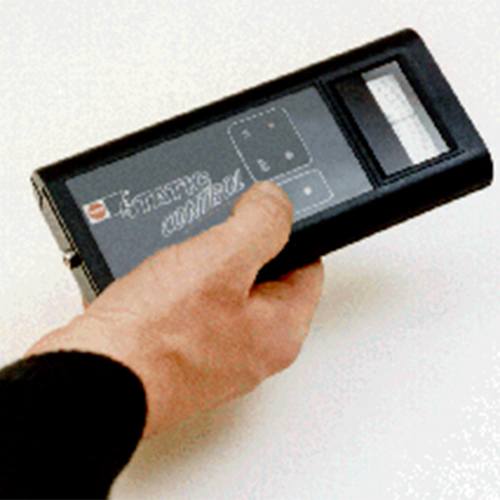
Static Control
è lo strumento portatile più semplice per misurare l’intensità del campo elettrostatico (KVolt/metro). Può misurare fino a 1000KV/m ed è alimentato da una batteria di 9V. Lo strumento è analogico con zero centrale per permettere la misurazione di cariche positive (a destra) e negative (a sinistra). Distanza di misurazione dal materiale: 20mm.
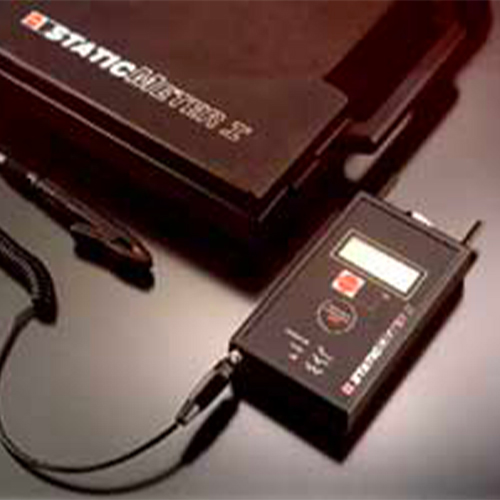
Static Meter I
Questo strumento serve a misurare la tensione del campo elettrostatico (Volt). E’ di piccole dimensioni ed estremamente preciso grazie al suo display digitale. E’ alimentato da una batteria a 9V, e viene fornito in una pratica valigetta con tutti gli accessori. Il sensore è dotato di un elemento rotante per uniformare la lettura del campo elettrico.
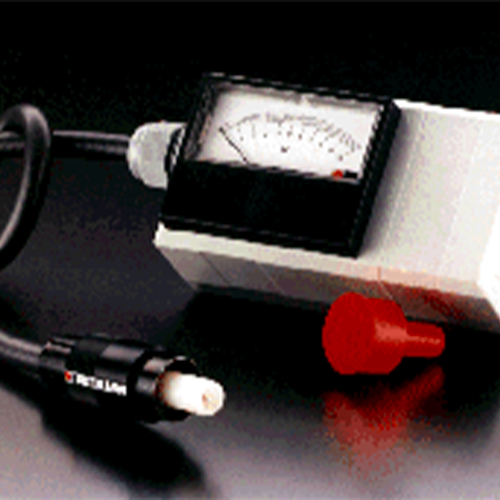
Voltmetro ac (cod. 12.7232.000)
Questo strumento serve a misurare la tensione di uscita degli alimentatori di scarica (fino a 10KVolt ac). Va installato tra l’uscita dell’alimentatore e la barra di scarica, in questo modo è possibile monitorare il valore della corretta tensione di uscita dell’alimentatore.

Statometer II
È uno strumento con lettura digitale di alta precisione. Può misurare una intensità del campo elettrostatico fino a 2000Kvolt/metro. È alimentato sia a corrente (230V) sia con batterie ricaricabili. Il probe di misurazione è collegato allo strumento con un cavo spiralato. Questo strumento ha una uscita per poter essere collegato ad un registratore. Grazie alla sua pratica maniglia, è lo strumento ideale sia per misure di laboratorio che per misurazioni sul posto.
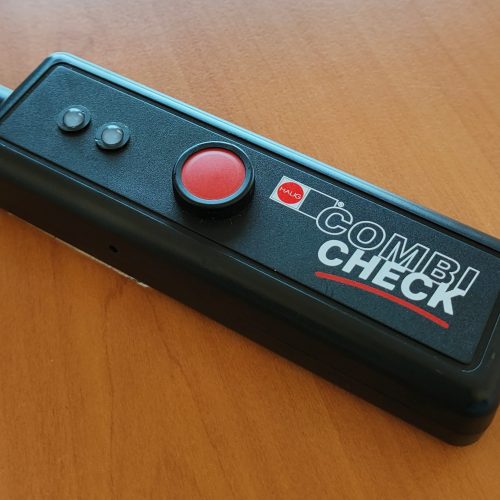
Combicheck
Il tester per alta tensione Combicheck è un tester di funzionamento per gli alimentatori e le unità ionizzanti HAUG. Un commutatore permette di impostare l’unità per testare sia gli alimentatori che le unità ionizzanti.
Vuoi richiedere un’offerta?
Sei interessato a ricevere maggiori informazioni e ad essere ricontattato da un nostro operatore specializzato?
Richiedi ora la tua offerta

Vuoi richiedere un’offerta?
Sei interessato a ricevere maggiori informazioni e ad essere ricontattato da un nostro operatore specializzato?
Richiedi ora la tua offerta
Domande frequenti
Che cos’è l’elettrostatica?
L’elettrostatica studia i campi elettrici stazionari, cioè generati da cariche statiche disposte su superfici dielettriche.
Cosa si può fare con i sistemi elettrostatici?
Si può eliminare la carica indesiderata o si può generare una carica.
Cosa si intende per ionizzazione?
Equivale all’eliminazione della carica elettrostatica. Una barra produce ioni che eliminano le cariche sulla superficie.
In quali casi occorre caricare una superficie?
Il caso più tipico è quello di fare aderire la superficie ad un’altra, realizzando una sorta di “incollaggio” elettrostatico.
Scarica e carica sono processi tecnicamente differenti?
Sì, una barra di scarica (ionizzante) genera ioni mentre una barra di carica genera un campo elettrico stazionario.
Se voglio scaricare un film posso usare una sola barra ionizzante?
No, dato che le cariche su un dielettrico sono stazionarie occorre scaricare entrambe le facce del film tramite due barre contrapposte.
Perché non usare più semplicemente una spazzola antistatica?
Questa è un’ottima soluzione per RIDURRE la carica, ma se occorre ELIMINARE la carica si deve utilizzare una barra ionizzante.
Fino a quale distanza agisce una barra di scarica?
20-30 mm. Però con l’ausilio di opportuni sistemi ad aria compressa o ventilata è possibile arrivare a 500 mm e oltre.
Esistono rischi di infortunio nell’utilizzo di sistemi elettrostatici?
Le barre di scarica (ionizzanti) sono sicure al tatto e non danno alcun problema (escluso casi particolari segnalati). Le barre di carica invece non devono essere toccate durante il funzionamento, anzi devono essere schermate.
Come posso verificare l’efficacia di un trattamento elettrostatico?
Sono disponibili a catalogo numerosi sistemi di misura della carica elettrostatica, ma in genere il risultato si vede immediatamente dopo il trattamento.

